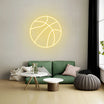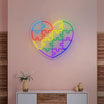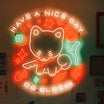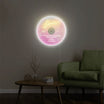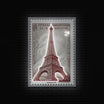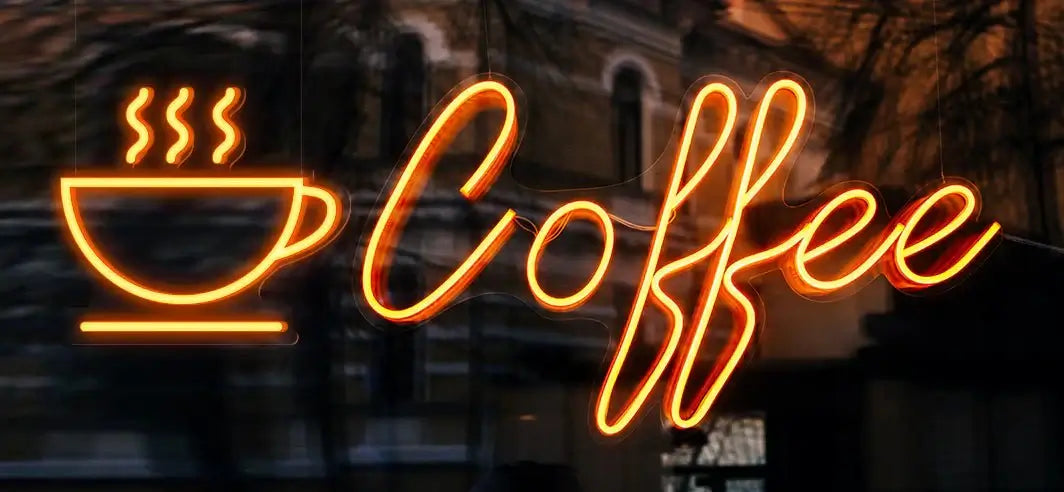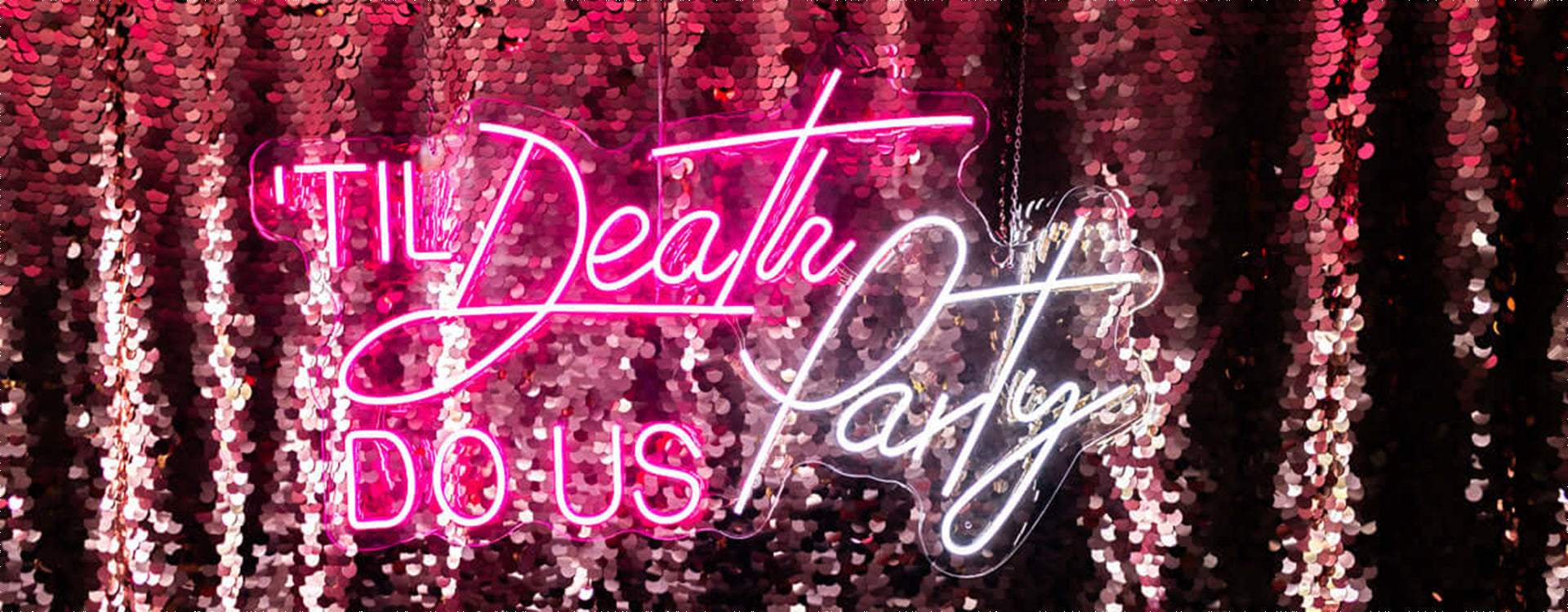As we move into 2024, the art industry continues to evolve, embracing new mediums, technologies, and aesthetic preferences. From digital art to immersive installations, the boundaries of creativity are being pushed, and one artistic trend that stands out is the growing use of neon signs in artwork. Once considered a niche medium, neon lighting has become a staple in contemporary design, bridging the gap between traditional art forms and modern technology. The versatility of neon, its ability to convey both simplicity and complexity, and its vibrant aesthetic make it an essential part of today's art world.
What Are the Latest Developments in the Art Industry in 2024?
1. The Rise of Interactive and Immersive Art
One of the most significant trends in the art world in 2024 is the rise of interactive and immersive art experiences. Audiences today are no longer satisfied with simply viewing art; they want to be a part of it. Artists are creating installations that invite viewers to step inside and engage with the work on a sensory level. This trend is particularly noticeable in galleries and museums, where entire spaces are transformed into immersive environments that stimulate sight, sound, and touch.
Example:
In an immersive exhibition, neon signs can play a critical role in creating an atmospheric experience. For instance, an installation that mimics a bustling cityscape might incorporate neon signs to simulate the glow of urban lights. The combination of neon with other sensory elements, like soundscapes or digital projections, can enhance the immersive quality of the experience.
2. Sustainability and Eco-Conscious Art
Another key trend in 2024 is the growing emphasis on sustainability in art. Artists are increasingly aware of their environmental impact, and many are choosing to work with sustainable materials or explore themes related to eco-consciousness. Neon signs, particularly those made with LED neon, offer a more eco-friendly alternative to traditional lighting, consuming less energy while still providing a vibrant and dynamic visual effect.
Example:
A gallery could feature a series of neon artworks powered by renewable energy, such as solar panels, highlighting the importance of sustainability in art. These neon pieces might depict natural elements—like waves or trees—using energy-efficient lighting to reinforce the connection between art and the environment.
3. The Fusion of Digital and Physical Art
The intersection of digital and physical art forms is another major trend. Artists are using technology to expand the possibilities of traditional art mediums, often blending digital projections with physical sculptures or paintings. Neon signs are a natural fit for this trend, as they bring both a tangible and luminous quality to installations.
Example:
An artist might create a piece that combines digital animations projected onto a wall with neon lighting outlining key elements of the design. This fusion of light, color, and motion creates a multi-dimensional experience that blurs the lines between digital and physical art.
How Do Neon Signs Play a Role in the Evolution of Contemporary Art?
1. Neon as a Medium for Expression
In contemporary art, neon signs are more than just decorative pieces—they are powerful tools for expression. Neon’s bold lines and vibrant colors allow artists to communicate messages in a visually impactful way. Whether used to display text, abstract designs, or representational images, neon has the ability to convey both simplicity and complexity, making it a versatile medium for contemporary artists.
Example:
Consider Tracey Emin’s famous neon artworks, where she uses neon to display deeply personal and emotional messages, such as “I Promise to Love You.” The neon medium amplifies the intensity of her words, turning them into glowing beacons that command attention. This use of neon as a storytelling device has inspired many contemporary artists to explore its potential for self-expression.
2. The Appeal of Neon’s Aesthetic in Contemporary Art
Neon’s unique aesthetic is one of the key reasons it remains a popular medium in the art world. Its bright, glowing lines offer a sense of immediacy, drawing the viewer’s attention and creating a sense of energy within the space. In a world where art is increasingly about making bold statements, neon’s capacity to dominate a room makes it a valuable tool for contemporary artists.
For instance, in a minimalist gallery space where the walls are blank and the lighting is subdued, a single neon artwork can completely transform the environment. The artwork’s glow provides both visual and emotional warmth, making the space feel more dynamic and engaging.
3. Neon in Public Art
In 2024, neon signs are also playing a significant role in public art installations. Artists are using neon to create large-scale pieces that brighten city streets, public parks, and even building facades. Neon’s ability to illuminate spaces after dark makes it a popular choice for outdoor installations, where it can transform a public space into a vibrant, interactive art piece.
Example:
A city might commission an artist to create a neon mural that spans the side of a building. The mural could feature abstract designs or cultural symbols that reflect the community’s identity, illuminated by glowing neon lights at night. This type of public art installation not only enhances the cityscape but also provides residents and visitors with a unique, immersive experience.

What Makes Neon Signs a Staple in the Art World Today?
1. Neon’s Cultural and Historical Significance
Neon signs have a rich cultural history, particularly in urban environments. From the neon-lit streets of Las Vegas and Tokyo to the iconic signage of New York City, neon has long been associated with nightlife, commerce, and entertainment. In recent years, however, neon has transcended its commercial roots and become a staple in contemporary art. Artists are drawn to neon because of its cultural significance and its ability to evoke nostalgia while also feeling fresh and modern.
Example:
An artist might create a neon piece that mimics the design of an old-fashioned diner sign but reinterprets it with a modern twist—perhaps adding abstract shapes or a futuristic color palette. This blending of past and present helps to cement neon’s place in contemporary art, where it continues to evolve.
2. The Adaptability of Neon in Various Art Forms
One of the reasons neon signs have become a staple in the art world is their adaptability. Neon can be used in a variety of formats—from large-scale installations to small, intimate pieces. Its flexible design capabilities make it ideal for both public and private settings, and it can be integrated into almost any style of art, from pop art to conceptual art.
Example:
An artist might use neon in a small, personal installation that fits in a home gallery, creating a piece that speaks to the owner’s individual tastes and emotions. At the same time, neon can be scaled up for large installations in museums or outdoor spaces, demonstrating its versatility across different art forms.
How Can Neon Artwork Adapt to Changing Design Trends?
1. Embracing New Technologies
As technology continues to advance, neon artwork can evolve by incorporating new forms of lighting and interactivity. For example, artists are now experimenting with smart LED neon lights that can change color or brightness based on viewer interaction or environmental factors. This ability to respond to the surroundings makes neon even more dynamic and adaptable to future design trends.
Example:
An interactive neon sign could be displayed in a gallery, where the colors shift depending on the viewer’s proximity to the piece. This fusion of neon with smart technology adds a new layer of engagement, allowing the audience to become part of the artwork.
2. Incorporating Neon into Sustainable Design
With the growing emphasis on sustainability, neon artwork can adapt by becoming more eco-friendly. LED neon signs, which use less energy than traditional neon, offer an environmentally conscious option for artists and designers. This shift towards sustainability ensures that neon will continue to be relevant in an art world that increasingly values eco-conscious practices.
Example:
A neon artist might design a series of sustainable, energy-efficient neon pieces that highlight environmental themes, such as ocean conservation or climate change. The use of LED neon in these pieces not only reflects the subject matter but also aligns with the artist’s commitment to sustainability.
Conclusion
In 2024, neon signs have solidified their place in the art world, playing a key role in both contemporary and public art. Their ability to adapt to new technologies, sustainability concerns, and evolving design trends ensures that they will continue to be a staple in the industry for years to come. Whether used in immersive installations, eco-conscious galleries, or personal art collections, neon signs remain a powerful and versatile medium that reflects the dynamic nature of modern art.




